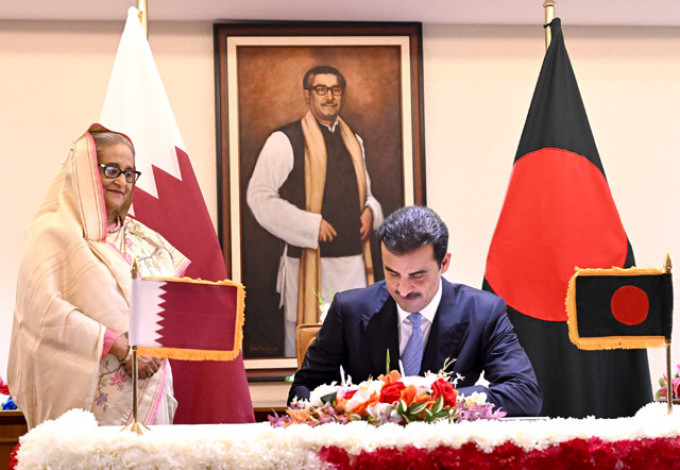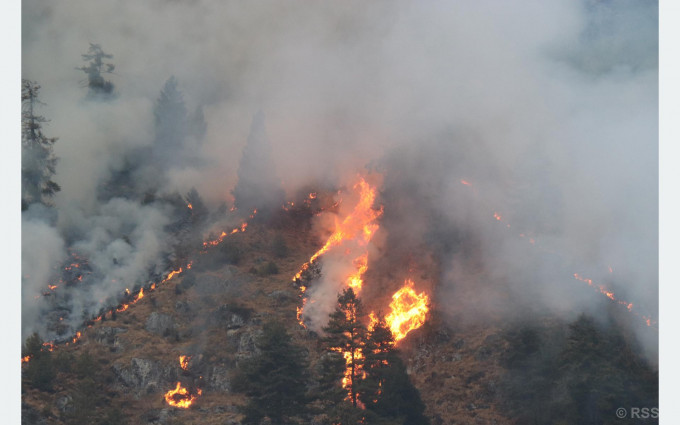Rescue crews on Monday pulled a 40-year-old woman from the wreckage of a building a week after two powerful earthquakes struck, but reports of rescues are coming less often as the time since the quake reaches the limits of the human body’s ability to survive without water, especially in sub-freezing temperatures.
The magnitude 7.8 and 7.5 quakes struck nine hours apart in southeastern Turkey and northern Syria on Feb. 6. They killed at least 33,185, with the toll expected to rise considerably as search teams find more bodies, and reduced much of towns and cities inhabited by millions to fragments of concrete and twisted metal.
On Monday rescuers pulled a 40-year-old woman from the wreckage of a 5-story building in the town of Islahiye, in Gaziantep province. The woman, Sibel Kaya, was rescued after spending 170 hours beneath the rubble by a mixed crew that included members of Turkey’s coalmine rescue team.
Earlier, a 60-year-woman, Erengul Onder, was also pulled out from the rubble in the town of Besni, in Adiyaman province, by teams from the western city of Manisa.
“We received the news of a miracle from Besni which helped put the fire raging in our hearts a little,” wrote Manisa’s mayor Cengiz Ergun on Twitter.
Eduardo Reinoso Angulo, a professor at the Institute of Engineering at the National Autonomous University of Mexico said the likelihood of finding people alive was “very, very small now.”
The lead author on a 2017 study involving deaths inside buildings struck by earthquakes, Reinoso said that the odds of survival for people trapped in wreckage fall dramatically after five days, and is near zero after nine days, although there have been exceptions.
David Alexander, a professor of emergency planning and management at University College London, agreed, saying the window for pulling people alive from the rubble is “almost at an end.”
But, he said, the odds were not very good to begin with. Many of the buildings were so poorly constructed that they collapsed into very small pieces, leaving very few spaces large enough for people to survive in, Alexander said.
“If a frame building of some kind goes over, generally speaking we do find open spaces in a heap of rubble where we can tunnel in,“ Alexander said. “Looking at some of these photographs from Turkey and from Syria, there just aren’t the spaces.”
Wintery conditions further reduce the window for survival. Temperatures in the region have fallen to minus 6 degrees Celsius (21 degrees Fahrenheit) overnight.
“The typical way the body compensates for hypothermia is shivering — and shivering requires a lot of calories,” said Dr. Stephanie Lareau, a professor of emergency medicine at Virginia Tech. “So if somebody’s deprived of food for a number of days and exposed to cold temperatures, they’re probably going to succumb to hypothermia more rapidly.”
A week after the quakes hit, many people were still without shelter in the streets. Some survivors were still waiting in front of collapsed buildings waiting for the bodies of their loved ones to be retrieved.
Many in Turkey blame faulty construction for the vast devastation, and authorities have begun targeting contractors allegedly linked with buildings that collapsed.
At least 131 people were under investigation for their alleged responsibility in the construction of buildings that failed to withstand the quakes, officials said.
Turkey has introduced construction codes that meet earthquake-engineering standards, but experts say the codes are rarely enforced.
In Syria, U.N. Under-Secretary-General for Humanitarian Affairs Martin Griffiths said that the international community has failed to provide aid.
Visiting the Turkish-Syrian border Sunday, Griffiths said Syrians are “looking for international help that hasn’t arrived.”
“We have so far failed the people in northwest Syria. They rightly feel abandoned,” he said, adding, “My duty and our obligation is to correct this failure as fast as we can.”
The earthquake death toll in Syria’s northwestern rebel-held region has reached 2,166, according to the rescue group the White Helmets. The overall death toll in Syria stood at 3,553 on Saturday, although the 1,387 deaths reported for government-held parts of the country hadn’t been updated in days. Turkey’s death toll was 29,605 as of Sunday.
In the Syrian capital of Damascus, the head of the World Health Organization warned that the pain will ripple forward, calling the disaster an “unfolding tragedy that’s affecting millions.”
“The compounding crises of conflict, COVID, cholera, economic decline, and now the earthquake have taken an unbearable toll,” Tedros Adhanom Ghebreyesus said.
READ ALSO:








